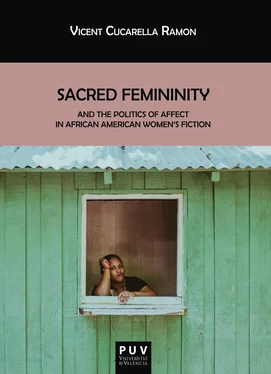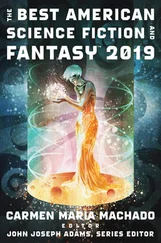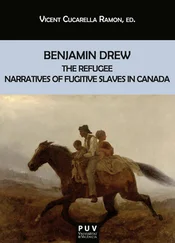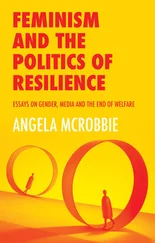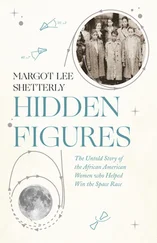The rhetoric device of the jeremiad has been used since slavery by African Americans to cast away the pernicious discourses that placed them outside the national imagery of the United States. If slaves had to fulfill the Christian values and therefore could not openly vent their anger or wage a direct attack to the slave system, they found a subtle way to criticize the “peculiar institution”. Slaves galvanized the jeremiad rhetoric to spread their critiques and speak against the system. David Howard-Pitney gives a complete definition of the American jeremiad as “a rhetoric of indignation, expressing deep dissatisfaction and urgently challenging the nation to reform” (5). He goes on explaining that “(t)he term jeremiad, meaning a lamentation or doleful complaint derives from the biblical prophet, Jeremiah, who warned of Israel’s fall and the destruction of the Jerusalem temple by Babylon as punishment for the people’s failure to keep the Mosaic covenant” (5). This is exactly what John Winthrop stated for America in 1630 with his sermon “A Model for Christian Charity” in which he announced to the Puritans that America was an earthly paradise. Likewise, as Sacvan Bercovitch explains, Winthrop also warned that if Puritans fell prey to temptations, “God would surely withdraw their ‘special appointment’, weed them out, pluck them up, and cast them out of His sight” (4). These threats would unrelentingly model the American jeremiad.
The jeremiad offered black people a weapon to fight against a system that had the responsibility to treat them fairly for “Blacks’ mission and destiny was inseparable from America’s own” (Howard-Pitney 24). The jeremiad became the tool of protest for black people and, especially, was adopted by the authors of slave narratives to inform and exhort white Americans about the evils of slavery. Black slaves assumed the jeremiad because, as Wilson Jeremiah Moses clearly points out, “If the bondage of the colonies to England was similar to the enslavement of Israel in Egypt, was not the bondage of blacks in America an even more perfect analogy?” (31). Moreover, “(i)f Americans... were in fact a covenanted people and entrusted with the mission to safeguard the divine and the natural laws of human rights, was there not a danger to covenant in perpetuating slavery?” (31). African Americans adapted their rhetoric to the jeremiad tradition, which was one of the dominant forms in the antebellum America, also for the fact that “(t)heir use of the jeremiad revealed a conception of themselves as a chosen people, but it also showed a clever ability to play on the belief that America...was a chosen nation with a covenantal duty to deal justly with the blacks” (31). Thus, the jeremiad fortified the belief that African Americans had a place in America because if slaves were also a chosen people they should be rewarded by a just God. This was the beginning of the African American jeremiad which established the typology of America’s mission. Since slavery was a perverse violation of the natural and divine law, “the black jeremiad was not simply to provide a verbal outlet for hostilities; it was a means of demonstrating loyalty—both to the principles of egalitarian liberalism and to the Anglo-Christian code of values” (Moses 38). Their own sense of spirituality allowed African Americans to reinterpret and personify the jeremiad convinced that “liberty, equality, and property were not merely civic ideals. They were part of God’s plans” therefore “America, as the home of libertarian principles, was the lasting ‘habitation of justice, and mountain of holiness’... quoting Jeremiah 31” (Bercovitch 111).
The African American jeremiad sprang forth due to the nation’s collective sins. In the African American rhetoric, slavery was considered “the last remaining obstacle to the American millennium; it represented the armies of Babylon threatening the city of God. It symbolized the chariots of Pharaoh soon to be engulfed in the tide of America’s sacred history” (Moses 46). Thus authors of slave narratives used the African American jeremiad with the double aim of asserting themselves as Americans and to demand a fair treatment as inhabitants of the American paradise on earth. As Howard-Pitney sums up, “the African American jeremiad expressed black nationalist faith in the missionary destiny...and was a leading instrument of black social assertion in America” (11). Slave narratives overtly challenged the puritan myth of America as a beacon to the world. They outlined that racism was immoral and through the African American jeremiad they were able to “confront the conflict between America’s democratic promise and white America’s undeniable racism” (Howard-Pitney 24). Stemming from the slave narratives onwards, the African American jeremiad evolved into a perfect outlet to both criticize and take part of the American society with the sheer confidence to bring down its moral deterioration.
In fact, African American literature has tried, from the very beginning, to accommodate its ethos to the American exceptionalism that the nation has cultivated as a national standard. This is so because in the national and ideological turmoil that suffused the American Revolution the need of an ideological invention that could live up to the nascent nation’s idiosyncrasy became primordial. To create this sense of nationhood that served as a starting point to model the formation of a national ideology old texts, like those penned by John Winthrop or Cotton Mather, acquired purpose and momentum and therefore were brought to the front to be galvanized and reinterpreted as cultural emblems. Slave narratives together with the first works of fiction that black Americans styled, for example, drawn from this cultural outlet aiming to both embrace and criticize such national message.
The Bondwoman’s Narrative, Moses, Man of the Mountain and A Mercy reshape the Christian message as it is propounded in the Bible to elevate their own conception of the spiritual message—the aforementioned black Christianity—to the national arena. Thus Crafts, Hurston and Morrison not only narrativize their sense of sacredness but also create a feminine and feminist aesthetic to be placed and cherished within the African American cultural discourse. My main contention is that the sacred femininity that puts the ethics and aesthetics of African American women at the center of a certain mode of (African) Americanness relies, to a large extent, on a personal view of spirituality that links women ontologically. I use the term sacredness following Mircea Eliade’s coinage of the concept. According to this famed historian of religion, sacredness has little to do with a supernatural vision of the world. Contrarily, it evokes a new way to represent, and to proclaim, a “sense of being” (116). By using sacredness I also point to Ryan’s vision in which the term encompasses spirituality and ideology articulated “through the artistic expression of African diaspora experience” (10).
Since the way to reinvent themselves became primordial for African American women from the early stages of the nation-to-be onwards, a distinct mode of representation following their own spiritual understanding of the Christian creed surfaced as a means of empowering but also as a means to create a specific black cultural outlet. Indeed, black women appraisal of sacredness modulates a spirituality deeply related to womanhood. I refer to spirituality as it is described by Amanda Portfield in her work Feminine Spirituality in America . Portfield describes the African American women’s version of spirituality as a “spirituality [that] engages an individual’s deepest feelings, it encompasses the religious attitudes and experiences of individuals, and it does not require belief in God or allegiance to institutional forms of worship” (7).
Читать дальше
